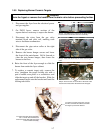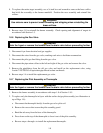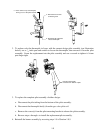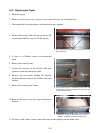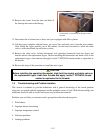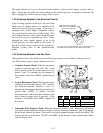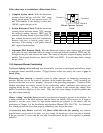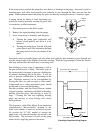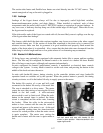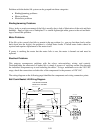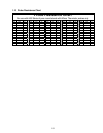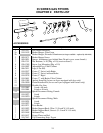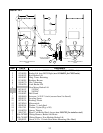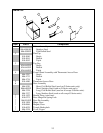1-15
Occasionally a burner may apparently be operating correctly, but nevertheless the fryer has a slow
recovery rate (the length of time required for the fryer to increase the oil temperature from 250ºF to
300ºF (121ºC to 149ºC). The primary causes of this are low burner manifold pressure and/or
misaligned or missing deflector targets. If both of these causes are ruled out, the probable cause is a
gas valve regulator that is out of adjustment. Refer to the Check Burner Manifold Pressure
procedure in the semi-annual checks and services section of Chapter 5 of the Installation and
Operation Manual (P/N 819-5776).
1.9.6 Improper Temperature Control
Temperature control is a function of several interrelated components, each of which must operate
correctly. The principle component is the operating thermostat. Other components that may affect
temperature control are the high-limit thermostat and the gas valve. The high-limit thermostat is
checked by comparing the resistance in its leads for a given temperature with the chart on Page 1-19.
See Section 1.9.4 for the procedures for checking the gas valve.
Failure to Control at Setpoint
The problem will be with the thermostat itself. Possible causes are that the thermostat is out of
calibration, the knob or flexible shaft is loose on the thermostat shaft, a thermostat wire is
disconnected or broken, or the thermostat is defective. Refer to Section 1.7 for instructions on
calibrating the thermostat. To check for thermostat failure: Determine the temperature of the oil in
the frypot using a thermometer or pyrometer placed at the tip of the probe, then check the for a
resistance through the leads that is approximately equal to that given in the Probe Resistance Chart
on Page 1-19 for the corresponding temperature. If this checks OK, check for at least 5 megaohms
of resistance through each of the leads to ground. If both checks are not OK, replace the thermostat.
1.9.7 Filtration Problems
The majority of filtration problems arise from operator error. A common error is placing the filter
paper on the bottom of the filter pan rather than over the filter screen.
When the complaint is “the pump is running, but no oil is being filtered,” check the installation of
the filter paper, including size. While you are checking the filter paper, verify that the O-rings on
the bottom of the filter pan and on the male disconnect (at inside rear of filter cabinet) are present
and in good condition. Missing or worn O-rings will allow the pump to suck air and decrease its ef-
ficiency.
If the pump motor overheats, its thermal overload will trip and the motor will not start until it is
reset. If the pump motor does not start, press the red reset switch located on the end of the motor
nearest the operator. If the pump then starts, something caused the motor to overheat. It may be just
that several frypots were being filtered one after the other and the pump got hot. Letting the pump
cool down for at least a half-hour is all that is required in this case. More often, the pump
overheated for one of the following reasons:
• Shortening was solidified in the pan or filter lines.
• The operator attempted to filter oil or shortening that was not heated. Cold oil and shortening
are thicker and can cause the pump motor to overheat.



